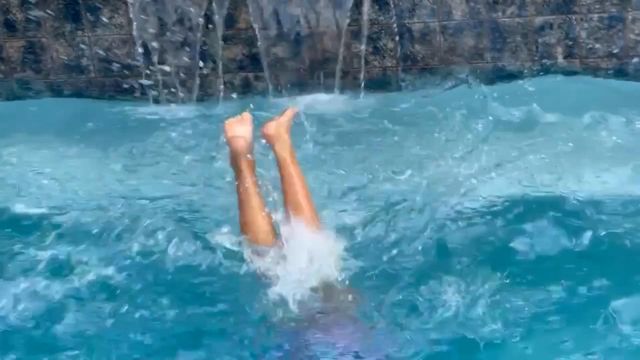Signs of drowning aren't what you think. Here's what to look for.
A shortage of lifeguards across the nation means many public swimming pools and beaches may be closed or limit their hours.
Anywhere that people swim without a lifeguard, water safety can become an issue.
Some people have a misconception of what drowning looks like.
"Drowning in this country remains one of the leading causes of accidental death in children and affects adults, as well,” said Dr. Michael Boniface, an emergency medicine physician at Mayo Clinic.
Boniface said drowning doesn’t look how people might expect. There isn’t the splashing or screaming often seen in the movies or TV shows.
“In most cases, you don’t see a struggle,” Boniface said. “You just see somebody under the water or floating face down.”
In some cases, there is a window of a few seconds where you might notice some signs. A drowning person won’t wave their arms because their arms instinctively push down to try and get them above water. Also, a drowning person is unable to make any sound, so if a child is noticeably quiet, that’s a red flag.
Boniface says the most important thing you can do is take steps to prevent drowning, including limiting alcohol consumption so reflexes stay sharp, fencing off a pool and keeping an eye on kids in the water.
"This involves close, constant adult supervision, somebody watching the water at all times,” Boniface said.
Other signs to look for include glassy eyes, swimmers unsuccessfully trying to roll over on their back or appearing to climb an invisible ladder.
Here’s what the U.S. Centers for Disease Control and Prevention recommends for how to prevent drownings:
- Learn basic swimming and water safety skills: Formal swimming lessons can reduce the risk of drowning.
- Build fences that fully enclose pools: Build and use a four-sided fence at least four feet in height.
- Supervise closely: A responsible adult should supervise closely and constantly when children are in or near water.
- Wear a life jacket: Life jackets reduce the risk of drowning while boating for people of all ages and swimming abilities.
- Learn CPR: CPR skills could save someone’s life in the time it takes for paramedics arrive.
- Know the risks of natural waters: Lakes, rivers and oceans can have hidden hazards. They include dangerous currents or waves, rocks or vegetation and limited visibility.
- Avoid alcohol: The CDC says to avoid drinking alcohol before or during swimming, boating and other water activities.
- Use the buddy system: Always swim with a buddy and choose swimming sites that have lifeguards when possible.
- Take additional precautions for medical conditions: Know if your medical condition might increase your risk of drowning.
- Consider the effects of medications: Avoid swimming if you take medications that impair your balance, coordination or judgement.
- Don’t hyperventilate or hold your breath for a long time: Do not hyperventilate before swimming underwater or try to hold your breath underwater for long periods of time. This can cause you to pass out and drown.











